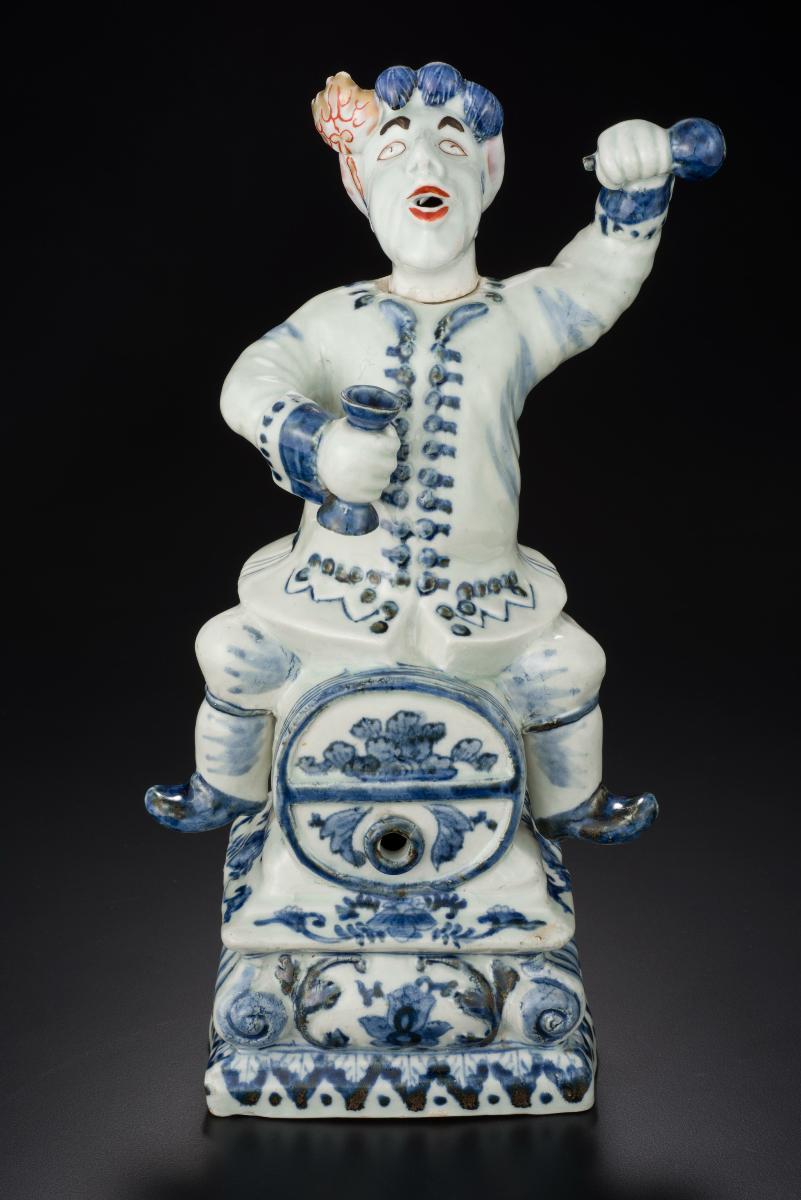
- Date/ Period
Early 18th Century - RegionJapan, Arita
- Dimension
- Object size: 36 x 22 x 12.5 cm
- Material
Porcelain - Collection of
- Asian Civilizations Museum
- Category
- Ceramics
Spirit keg depicting a Dutchman sitting on top of a barrel
The Keg is made from Japan during the early 18th Century. During the 17th century, China’s Ming Dynasty came across a political and economic upheaval. The beloved Chinese blue and white porcelain that was favored had ceased trading. The Dutch needed a substitute for their Chinese porcelain and turned to Japan.
Japan imitates the way China paints their porcelain; in blue and white, so that it fills the gap of Porcelain supply when China stopped their porcelain trade. There was a certain for of porcelain making by Arita Kilns that they developed for Japanese Tea Ceremony thus, the Arita kilns adopted their own motifs different from of the Chinese kilns. It is seen on the flowers and motifs on the barrel and square base.
In the early 17th Century, Japan opened their country to the Dutch. That was when Japan developed knowledge from the Dutch; gathering the knowledge of Western technology and medicine.
The Keg is an example of Japan Arita kilns taking a Dutch man as their muse on their Keg; appealing to the Dutch. It is seen to be a Dutch man as it is seen from visual analysis that the figure’s action has a form of enthusiasm for alcohol and that it is an homage to the Dutch. This may be one of the examples of Japan giving tribute to the Dutch for bringing knowledge from outside their country and letting Japan gain study from that. The Figure gives off a positive and chirpy character which indicates how Japan sees the Dutch in a positive manner.
Thus, the Japanese kilns took the role of the porcelain supplier when the Chinese had stopped their porcelain production and exportation. They learnt the craftsmanship of the Chinese by imitating the technique to fill in the gaps that the West market had demanded. However, Japanese kilns had also utilized in their own art style. The motifs and craftsmanship had developed from there and thus, when the Chinese resumed their exports in 1980, there was a role reversal of the Chinese kilns imitating Japanese kilns’ Imari Style.
In the context of our group’s theme, the relation of Chinese kilns depicts the competitive market for porcelain (the demand and supply) and that there was an exchange of knowledge of techniques and craftsmanship. Thus, a network of cultures being traded during this time period all due to the fact the Chinese had stopped porcelain exportation during the Qing Dynasty.


